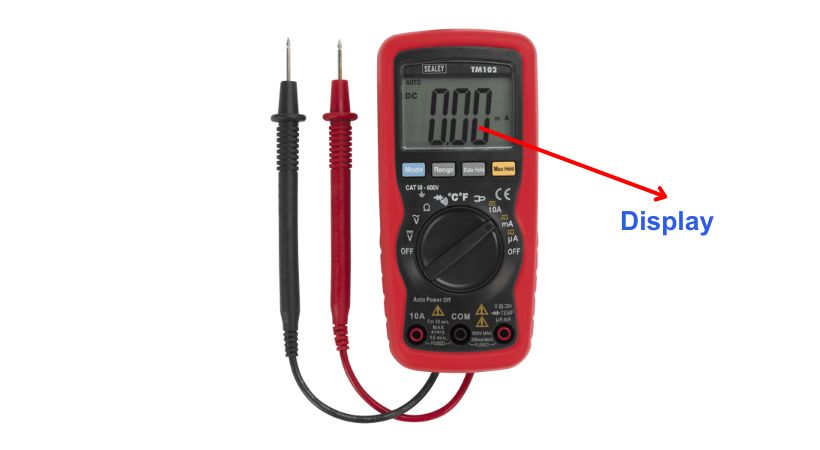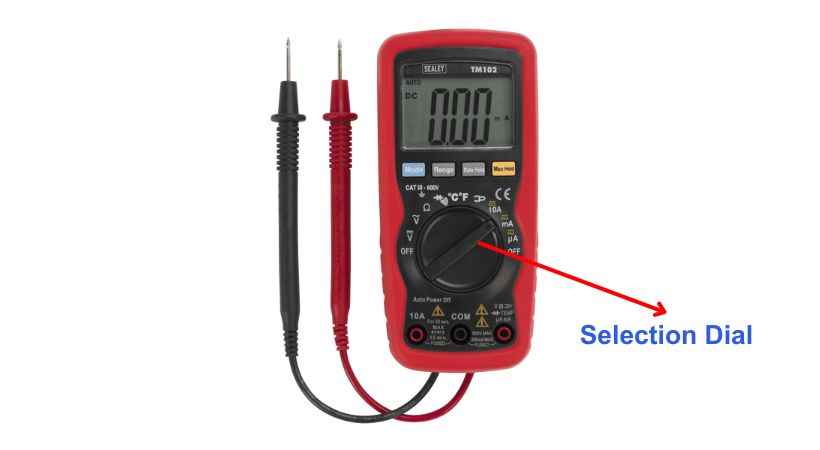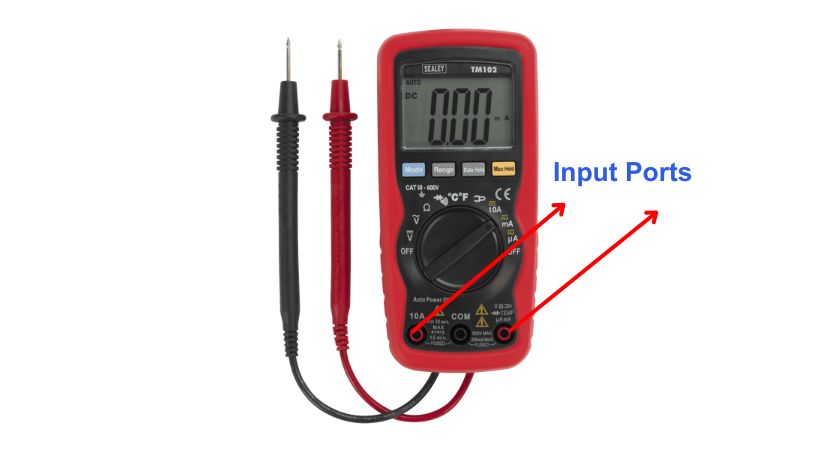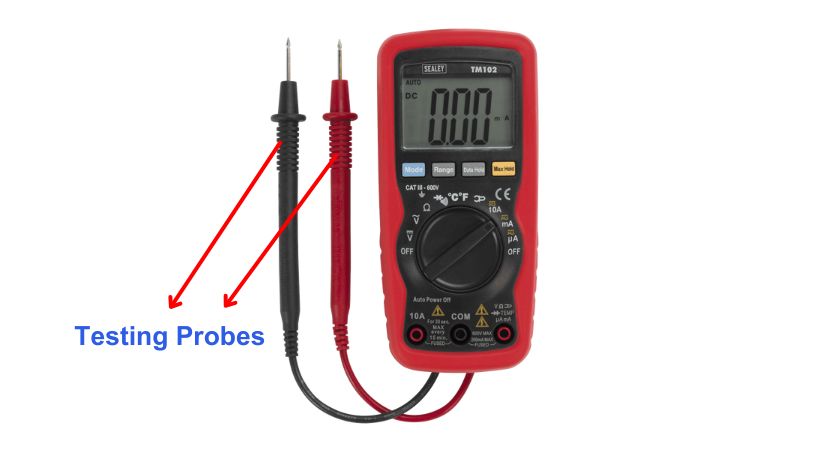What is multimeter? (Why we use it, 2025)
Various measuring tools are used to examine the circuit performance, but the multimeter is the most convenient and essential.
A multimeter, also known as a multitester or VOM (volt-ohm-milliammeter), is an electronic instrument used to measure various electrical parameters in a circuit. Multimeters are versatile devices that measure several different electrical quantities, making them invaluable for troubleshooting, testing, and maintenance tasks. The device is essential for troubleshooting, maintenance, safety, quality assurance, education, and research across various industries and applications.
The article will discuss in detail what is multimeter and why its use is so important in electronic and electrical engineering.
Multimeter
Multimeters are versatile and important tools, especially in electrical engineering, electronics, and maintenance.
Understanding what is a multimeter and why it is essential is effective for diagnosing electrical problems, ensuring safety, and maintaining the integrity of electronic systems.
A multimeter is a handheld electronic tool that is used to measure various electrical parameters.

It’s a versatile instrument capable of measuring different electrical parameters such as voltage, current, and resistance, and we can also test different components using continuity testing.
There are two types of multimeters: Analog and digital multimeters.
The analog multimeter has a needle that moves when measuring current, voltage, and resistance and indicates the measuring value for various parameters.
On the other hand, the digital multimeter is different in the sense, that it has a display screen and has analog-to-digital converter. This converter converts the analog signal into digital and displays the result on the multimeter screen.
The digital multimeter is considered more efficient, reliable, and accurate as it represents the results in the numeric values.
The multimeter has different components and features which aid in the measurement. Let’s talk about that in detail.
Components of multimeter
The multimeter consists of several components that work together to provide accurate measurements.
Here’s a detailed explanation of the different components of a typical multimeter:
1. Display
The display is where measurement readings and other relevant information are shown to the user.

In modern multimeters, the display is usually digital, providing numerical values for the measured parameters.
Some multimeters also feature analog displays, which use a needle or pointer to indicate measurement values on a scale.
2. Selective dial
The selection dial, often located on the front face of the multimeter, allows the user to choose the desired measurement function and range.

The dial typically includes various positions corresponding to different measurement modes, such as voltage (AC/DC), current (AC/DC), resistance, and continuity.
It also includes range settings to adjust the sensitivity of the multimeter for optimal measurement accuracy.
3. Input ports
Input ports, also known as terminals or jacks, are where test leads or probes are connected to the multimeter.

These ports are labeled according to the type of measurement they’re intended for, such as voltage (V), current (A), and resistance (Ω).
4. Testing probes
Test leads are insulated wires with probe tips used to make electrical connections between the multimeter and the circuit or component being measured.

Test leads usually come in pairs, with one lead featuring red insulation and the other black insulation.
The color coding helps users differentiate between positive and negative connections.
Features of multimeter
Multimeters offer a range of measurement functions tailored to different electrical parameters. These functions include:
1. Voltage
Voltage is the potential difference between two points in the circuit. Voltage is required for the circuit to function properly.
To make sure we have applied the correct voltage we measured the voltage.
Multimeters can measure both AC (alternating current) and DC (direct current) voltages. Voltage measurements are commonly used to check power supplies, battery voltages, and signal levels in electronic circuits.
2. Current
The current is the flow of charges and we measure the current in the circuit. The multimeter is also helpful in current measurement.
Multimeters can measure both AC and DC currents, typically up to a certain amperage rating. Current measurements help determine how much electrical current is flowing through a circuit or component.
3. Resistance
The resistance is the opposition to the flow of current. In the circuit, we have to connect a resistor with the right resistance that can control the flow of current.
In some applications, a very low-value resistor can damage the component, and a very high-value resistor can stop the flow of current to the component.
Multimeters measure resistance in ohms, allowing users to check the continuity of wires, diagnose faulty components, and determine the value of resistors.
4. Continuity test
The multimeter also offers the function of continuity test. Having the feature in a multimeter depends upon its model.
Continuity testing verifies the presence of a complete electrical path between two points in a circuit.
Some multimeters feature a continuity test mode that emits an audible beep when a low resistance (typically below 50 ohms) connection is detected.
This function is useful for quickly checking for continuity in wires, fuses, and switches. It is also essential for component testing.
5. Diode testing
Diode testing confirms the correct operation of a diode. Multimeters detect the forward voltage drop that occurs when they apply a tiny voltage across the diode.
A particular voltage drop that signifies appropriate forward conduction should be seen in a healthy diode.
Diode testing is used to find defective diodes in electrical components and circuits.
6. Capacitance
The ability of a capacitor to store charge is called capacitance. The capacitance measurement is essential to determine how much a capacitor can store.
A multimeter also offers a capacitance measurement feature.
The capacitance measurements are valuable for testing capacitors, identifying faulty components, and analyzing the behavior of electronic circuits.
7. Frequency
Frequency measurement determines the rate of oscillation or cycles per second of an AC signal. Multimeters measure frequency in hertz (Hz).
Frequency measurements are essential for analyzing AC signals, troubleshooting electrical systems, and verifying the proper operation of electronic devices.
These are some common features of the multimeter. Some multimeter offers features like data hold, auto-ranging, backlight, and safety ratings.
To troubleshoot or maintain the reliable function of the electrical and electronic circuit a multimeter is an accurate and efficient option.
How to use a multimeter?
The proper use of a multimeter is crucial for reliable and error-free measurements. Using a multimeter effectively involves several steps. Here’s a guide in bullet points:
- The first thing is to familiarize yourself with the multimeter’s features, including the selection dial, display, input ports, and test leads.
- Connect the test leads to the appropriate input ports on the multimeter.
- Now select the measuring mode, meaning what you want measured current, voltage, or resistance.
- Connect the test leads across the points in the circuit where you want to measure current, voltage, or resistance.
- If you want to test a component connect the lead across the components, and make sure you connect these leads in the right position.
- Interpret the measurement readings displayed on the multimeter’s screen.
- Always follow proper safety procedures when working with electrical circuits and systems.
By following these steps, users can effectively use a multimeter to measure various electrical parameters and troubleshoot circuits.
Why multimeter is important?
Suppose you are designing a circuit. Without using a multimeter you select the components and connect them in the way want. What if after applying voltage the circuit is not working?
There can be different factors like faulty components, impropriety applied voltage or current, and a very high or low value of resistors.
These problems might not have come up if the component and voltage value had been tested or measured with a multimeter.
Multimeters are crucial tools in both electrical and electronic engineering due to their versatility, precision, and ability to measure various electrical parameters.
Here’s a detailed explanation of why multimeters are essential.
1. Diagnostic tool
The multimeter is used as a diagnostic tool. In electrical and electronic engineering, diagnosing faults and troubleshooting problems is a fundamental aspect of the job.
Multimeters play a critical role in this process by providing accurate measurements of electrical parameters.
Engineers use multimeters to identify open circuits, short circuits, faulty components, and other issues that may affect the performance of electrical systems.
2. Maintenance and testing
The multimeter is also very useful in maintaining and testing various electronic and electrical circuits.
By regularly measuring voltage, current, and resistance, a person can monitor the condition and performance of components, identify potential problems before they escalate, and ensure the reliability of critical systems.
It is essential to have a good-quality multimeter with you whenever you working with different circuits.
3. Versatility
Multimeters are extremely versatile devices that combine numerous measurement operations into one unit.
Along with other things, they can measure frequency, continuity, resistance, capacitance, voltage, and current.
Because of its adaptability, experts and beginners can identify a variety of electrical issues, ranging from simple circuit errors to complex system issues.
4. Safety
Safety is always important when working with electrical and electronic circuits. The multimeter ensures the safety of the components and the person.
Multimeters help identify potential hazards such as electrical shorts, overloads, and faulty insulation.
By measuring voltage, current, and resistance, engineers can assess the safety of electrical systems, implement appropriate safety measures, and prevent accidents and injuries.
5. Education
When educating students about measuring methods, circuit analysis, and fundamental electrical concepts, multimeters are an invaluable teaching tool.
Students learn practical skills, build confidence in dealing with electrical systems, and understand theoretical concepts via hands-on practice with multimeters.
Whether in classrooms, laboratories, or workshops, multimeters are essential for training the next generation of electrical engineers.
Conclusion
The multimeters are indispensable tools for anyone working with electrical systems, from professionals in the field to students in the classroom.
It helps us in troubleshooting and identifying the faulty components in the circuit. The multimeter also measures the different electrical parameters of the circuit for circuit reliable operation.
Some measuring features of the multimeter are
- Voltage
- Current
- Resistance
- Continuity testing
- Diode testing
- Capacitance
- Frequency
Some multimeters offer features like data hold, safety rating, and auto-ranging. The multimeter is essential for various reasons.
Multimeters are important tools in electrical and electronic engineering due to their versatility, diagnostic capabilities, maintenance, safety features, educational value, and suitability for field service and research.
That’s it, I hope this article will be helpful.
Thank you and have a blessed life…
Other useful posts:
